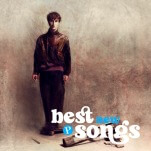The Redemption of Sinéad O’Connor
Photo by Rob Verhorst/Redferns
She was the queen of cancel culture, long before we ever called it that. Even prior to the infamous Saturday Night Live pope-photo-ripping incident, Sinéad O’Connor, who died last Wednesday at age 56, had been pegged as problematic. Her shy-but-outspoken nature signaled truth-to-power trouble to the entertainment industry and establishment figures and circles, as well as to many music journalists, who were skeptical of her contradictions and hyper-critical of her art.
Throughout a frequently thwarted 40-year career, O’Connor was treated by most interviewers not like a chart-topping recording artist, but like a schoolgirl who’d been sent to the principal’s office. They questioned her hairstyle, her lifestyle, her parenting choices and her sanity. When her cover of Prince’s “Nothing Compares 2 U” made her an international sensation, they asked if her tears were real and whether she had anything to do with the making of the award-winning video.
Rarely did anyone ask her about the crafting of the music itself—about how a 15-year-old Irish girl who got her first guitar from a nun built an epic ballad like “Troy” off of three chords, or how she learned to bend notes to the breaking point and back again with just her voice. (At more than six minutes, “Troy” was never played on commercial radio, but it’s in heavy rotation now via texts and social media among diehard fans, alongside a million crying face emojis.)
“It’s not a song,” O’Connor said about “Troy” in Kathryn Ferguson’s excellent 2022 documentary, “Nothing Compares,” the first in-depth exploration of the first five years of her career. “It’s a fucking testament.” To those who would mistake O’Connor as the one-hit wonder who did that thing on SNL, watch this live performance of “Troy” at the Pinkpop Festival in the Netherlands, from 1988. (The video isn’t great; you can hear the audio of the full set here.) Each time she approaches the mic, she looks like a serpent about to devour its prey—in part because, even in combat boots, she has to stand on her tip-toes to reach it. See how tall a 5’4 21-year-old becomes with 60,000 fans singing along.
As a Catholic school girl in the late 1980s, I spent most of my days plotting the weekend, when I would lie to my mother and sneak into a tiny club on the north side of town in specific hopes of hearing the “street mix” of “I Want Your Hands On Me,” from O’Connor’s extraordinary 1987 debut album, The Lion and the Cobra, that featured MC Lyte. I lived for music in those days, but that was the first album that, after hearing it once, made me feel like I might die if I couldn’t immediately hear it again. The rap remix of “I Want Your Hands On Me” wasn’t included on the album, but I bought it on cassette with babysitting money.
I experienced the closest thing I’d known to ecstasy years before actually trying the drug while dancing to this song, sweating through my shirt and disregarding everyone else around me, most of whom looked like lost band members of The Cure. I’d remind myself to wear black next time, even though I was partial to bright yellow. I’d race home in time to watch 120 Minutes on MTV, in hopes of catching “I Want Your Hands On Me,” or maybe “Troy” or “Mandinka,” and I’d impatiently tolerate everything else that came on beforehand—becoming an accidental connoisseur of ‘80s alternative music in the meantime. But Sinéad O’Connor never faded as my central icon of the era.
I adopted the same dance moves I saw Sinéad O’Connor use when she performed “Mandinka” during the 1989 Grammy’s—the one where she branded Public Enemy’s yellow and black bullseye logo on her scalp as a sign of protest for the institution again failing to recognize rap as a legitimate music category—hands dangling awkwardly from her sides as if carrying weights too heavy to lift, feet stomping angrily. Her moves seemed to have been perfected from within a mosh pit, something I’d read about but never actually witnessed in person.
Although my parents were Catholic in an almost ethnic sense, I was, for some reason, permitted to complain about my Catholic school, and I did so passionately, prolifically. Many of our religion teachers were “a little off”—one of them made boys who’d been “bad” do yard work at his house on the weekends, and though my friends and I certainly misbehaved, girls were never invited. We were taught to regard wayward clergy members as bad middle managers, their behavior in no way reflective of institutional values. When it came time for us to take part in confession at church, we’d gather beforehand to debate just how honest we planned to be. We’d wind up embellishing much of what we’d decided to divulge so as to provide cover, because there were sins we had every intention of repeating.
I’d mystified my parents when I began subscribing to magazines from faraway places—The Village Voice, Melody Maker, NME—mostly so I could read everything I could get my hands on about Sinéad O’Connor. I took it personally when critics failed to “get” her originality. The 1988 New York Times review of The Lion and the Cobra, titled “Out on a Limb, Shouting,” compared O’Connor to no fewer than a dozen artists in describing her sound: U2, Joni Mitchell, Stevie Nicks, Emerson, Lake and Palmer, Pretenders, Marianne Faithfull, Patti Smith, Kate Bush, Peter Gabriel, Laurie Anderson, etc.—as though she were nothing more than an amalgamation of everyone who came before. “Even its misfires suggest that with all her ambition and defiance, Ms. O’Connor could become a rock-and-roll Cassandra,” the critic wrote, surely not comprehending how prophetic he’d soon turn out to be.
When O’Connor performed on Saturday Night Live four years later, I didn’t immediately recognize the song she was singing—“War” by Bob Marley. I didn’t like how nervous she seemed. But when she ripped up the picture of Pope John Paul II, I knew it was the most righteous and radical punk-rock thing I’d ever witnessed in real time: A young woman, alone on a stage, tearing apart the patriarchy. Decades later, when I worked in the news department for NBC, a few floors down from sketch program’s home in 30 Rock, I would occasionally overhear a page referencing the incident while giving a tour of the SNL stage, being careful to tout it as the result of the show’s edgy risk-taking: “…and those are the high stakes of live television.”
How might Sinéad O’Connor’s act translate today, through the kaleidoscope of our fractured media? Surely she’d find more supporters who would defend her. At the very least, the collective attention span would be too short to maintain so much vitriol. But at the time, “it became a free-for-all for everyone around me to treat me like shit,” O’Connor recalled in “Nothing Compares.” She would eventually beg for mercy—the vitriol and death threats had become unbearable—but she pointedly never asked for forgiveness.
-

-

-

-

-

-

-

-

-

-

-

-

-

-

-

-

-

-

-

-

-

-

-

-

-

-

-

-

-

-

-

-

-

-

-

-

-

-

-

-








































